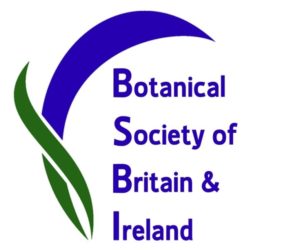Kirkcudbrightshire Botany Group at Carlingwark Loch, 17th June 2023
Those who arrived early were tempted to wander along the loch shore from the car park and were delighted to see abundant flowering Cowbane Cicuta virosa amongst the Reed Sweet-grass Glyceria maxima in the marginal vegetation.
When everyone had arrived, we walked around the eastern edge of the loch and down Lover’s Walk into the area of rich fen. We had agreed to head straight for the fen without recording the first monad we passed through, otherwise there was a good chance we would never reach the fen! On the way we stopped to listen to a singing Reed Warbler Acrocephalus scirpaceus, a species which isn’t all that common here, although Claire confirmed that there are several pairs at Mersehead.
One of the main objectives of the meeting was to re-find the Tufted-sedge Carex elata which Bob Merritt had found in June 2020, and we had his grid reference and instructions on how to find it. Unfortunately access to the area involved crossing a rather intimidating-looking barbed wire fence. However, by walking on a little further we found a gate into the field adjacent to the fen and we could then get to the sedge area rather more easily by squeezing under the barbed wire.
We quickly started finding tussocks of sedge which fitted the description of Carex elata and there was much discussion about how to distinguish C.elata from Common Sedge C.nigra – key differences are that C. nigra has stomata on the upper side of the leaf while C.elata has them on the underside; C.elata has a shorter lowest bract and is more tussocky. We felt confident that we had found good specimens of C.elata but were puzzled that some had such long lowest bracts.
Other notable species in this very rich fen area were Brown Sedge Carex disticha, Lesser Tussock-sedge C. diandra, Greater Tussock-sedge C. paniculata, Marsh Cinquefoil Comarum palustre, Bogbean Menyanthes trifoliata, Whorled Caraway Trocdaris verticillata , Water Dock Rumex hydrolapathum and Skullcap Scutellaria galericulata.
Despite finding so many good plants we still hadn’t located Bob’s precise grid reference for Carex elata, which was also where he had recorded Marsh Stitchwort Stellaria palustris that we hadn’t yet found. While sitting down overlooking the fen for lunch, David checked Bob’s photo and spotted a very distinctive tree in the background, which he realized we could see from our lunch spot! Soon we had found the exact clumps of C.elata that Bob had recorded as well as several beautiful plants of flowering Stellaria palustris.
Max mentioned that he had previously recorded Lesser Pond-sedge C.acutiformis nearby, and was able to take us to a place on the boardwalk and show us an excellent specimen which clearly demonstrated the key differences from C.elata: rhizomatous growth rather than tussocky; three stigmas instead of two and a long lower bract exceeding the inflorescence.
We then wandered into the area alongside the boardwalk and found several other interesting species: Narrow Buckler-fern Dryopteris carthusiana, White Sedge Carex canescens and Bay Willow Salix pentandra with its distinctive glossy leaves. We were also lucky enough to see a tiny fawn Roe Deer Capreolus capreolus lying motionless in the grass and Max took a lovely photo of it.
Lastly we retraced out steps back to the car park and tried our luck with the aquatic plants. Max did a star turn with the grapnel and landed a good spread of aquatics including Rigid Hornwort Ceratophyllum demersum, Nuttall’s Waterweed Elodea nutallii, Lesser Pondweed Potamogeton pusillus, Spiked Water-milfoil Myriophyllum spicatum, Greater Duckweed Spirodela polyrhiza and Ivy-leaved Duckweed Lemna trisulca.
Many thanks to David, Max, Theo, Claire and Jim for their observations and their company; it was a very enjoyable day.
Sarah White
Post Script
In order to clarify the situation over the Carex elata, specimens were sent to the BSBI sedge referee, Mike Porter. He was kind enough to reply very fully and said that our specimens consisted of both Carex elata and its hybrid with Carex nigra, C. x turfosa. This hybrid is variably intermediate between the parents in leaf width, bract length and ligule length and shape – and in having stomata on both leaf surfaces. It differs from C.elata in its generally non-tussock-forming habit and longer lowest bract.
On my return visit 20th June to collect the sedge specimens for Mike Porter, I also found a Potamogeton specimen which I identified as Flat-stalked Pondweed P.friesii. This has now been confirmed by the BSBI pondweed referee Chris Preston.

